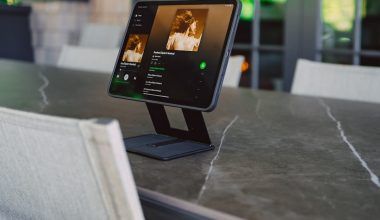Have you ever dreamed of creating your own music? Whether it’s catchy beats, emotional ballads, or experimental tunes, music production is how ideas become real. Producing music means taking sounds, arranging them, and turning them into a complete song. The good news? You don’t need a fancy studio to start; you can create music from your home! This guide will teach you everything about how to produce music in a way that’s super easy to understand.
What Is Music Production?
Let’s break it down. Music production has five main steps:
- Songwriting: Writing lyrics or creating melodies.
- Arrangement: Deciding the flow of your song (e.g., verse, chorus, bridge).
- Recording: Capturing sounds like vocals or instruments.
- Mixing: Balancing the sounds so everything fits together.
- Mastering: Polishing the final mix so it sounds great everywhere.
Think of it like cooking. Songwriting is choosing the ingredients, recording is cooking them, and mastering is serving a delicious dish to your listeners.
Tools You Need to Start Producing Music
Starting can feel overwhelming, but don’t worry—here’s a simple list of what you need:
1. A Computer or Laptop
You’ll need a device to run your music production software. A decent laptop or PC works just fine.
2. Digital Audio Workstation (DAW)
A DAW is software where you create and edit music. Popular ones include:
- FL Studio (great for beginners).
- Ableton Live (amazing for live performance and creativity).
- GarageBand (free and easy for Mac users).
3. Headphones or Monitors
Good sound is important. Start with basic headphones, like Audio-Technica M50x or any brand with clear audio.
4. Microphone (Optional)
If you want to record your voice or instruments, get a simple microphone like the Shure SM58.
5. MIDI Keyboard (Optional)
A MIDI keyboard helps you play and create melodies. It’s not mandatory but makes music creation easier.
Setting Up Your Music Production Space at Home
Don’t worry if you don’t have a professional studio. You can create music in your bedroom! Here’s how:
- Pick a Quiet Spot: Choose a room with minimal noise.
- Basic Acoustic Setup: Use blankets or cushions to reduce echoes. Foam panels are a bonus but not a must.
- Desk Setup: Keep your computer, headphones, and other tools within reach.
- Lighting: Good lighting helps you focus and stay creative.
Learning Songwriting: The Heart of Music Production
Every song starts with an idea—a story, an emotion, or even a random thought. Here’s how to begin:
1. Start Simple
You don’t need fancy words or complex melodies. A simple tune or a few lyrics are enough to get started.
2. Experiment with Chords
Chords are groups of notes played together. They set the mood for your song. You can find chord generators online or try common chords like C, G, Am, and F.
3. Think About the Mood
Is your song happy, sad, or energetic? Your tempo (speed) and key (major or minor) will reflect the mood.
Recording Your Music: Bring Your Ideas to Life
Once your song is ready, it’s time to record it. Don’t worry—you don’t need to be a tech expert to do this.
What Can You Record?
- Vocals: Use a microphone or even your phone to record singing or speaking.
- Instruments: Plug in a guitar or keyboard, or use virtual instruments in your DAW.
- Beats: You can use drum loops or create your own beats.
Recording Tips for Beginners
- Use a pop filter if recording vocals to reduce sharp “P” and “S” sounds.
- Record in a quiet room to avoid background noise.
- Save your work often (trust me, this will save you from heartbreak).
Mixing Music: Make It Sound Professional
Mixing is where you adjust everything to sound balanced and clean. Think of mixing as arranging a family photo—every person (sound) should be visible without overshadowing others.
Mixing Steps:
- Volume Levels: Make sure vocals, instruments, and beats are clear and not too loud.
- Panning: Spread sounds across left and right headphones for a stereo effect.
- Effects: Add reverb (echo) or delay for depth.
- Equalization (EQ): Adjust the bass, mids, and highs for a clean mix.
Mastering: The Final Step
Mastering gives your track the “wow” factor. It ensures the music sounds great on any device—be it headphones, speakers, or your car stereo. (how to produce music)
Mastering Basics:
- Compression: Smooth out volume differences.
- Limiter: Prevent the track from being too loud or distorted.
- Export Format: Save in WAV for high quality or MP3 for smaller file sizes.
Popular Genres and How to Produce Them
1. Pop Music
- Focus on catchy melodies.
- Use clean vocals and simple beats.
2. Hip-Hop
- Build beats using drum machines.
- Layer vocals with effects like auto-tune or reverb.
3. EDM (Electronic Dance Music)
- Use synthesizers for energetic drops.
- Experiment with tempo changes.
4. Acoustic or Indie
- Keep it minimal with guitars and soft vocals.
Tips for Staying Creative While Producing Music
1. Listen to Different Genres
Exploring new genres sparks fresh ideas.
2. Take Breaks
Overworking can dull your creativity. Step away and return with a fresh mind.
3. Collaborate
Work with friends or other musicians to bring new perspectives to your music.
Now that your track is ready, it’s time to share it! Here’s how:
- Distribute Your Music: Platforms like Spotify, Apple Music, and YouTube let you upload and reach millions of listeners.
- Promote on Social Media: Share clips of your songs on Instagram or TikTok to attract fans.
- Create a Portfolio: Use services like Deliver My Tune to build a website showcasing your music.
Avoid These Common Beginner Mistakes
- Too Many Effects: Simplicity is key.
- Skipping Tutorials: Learning the basics will save you time later.
- Not Backing Up Files: Always save your projects on a cloud or external drive.(how to produce music)
Final Words: You Can Do This!
Learning how to produce music may feel overwhelming at first, but take it step by step. Start small, experiment often, and don’t be afraid to make mistakes. Remember, every famous producer started exactly where you are now.
Related Articles:
For further reading, explore these related articles:
- What is PCM Audio Format? The Beginner-Friendly Guide
- What Does “In Review” Mean in the Music Industry?
For additional resources on music marketing and distribution, visit Deliver My Tune.






